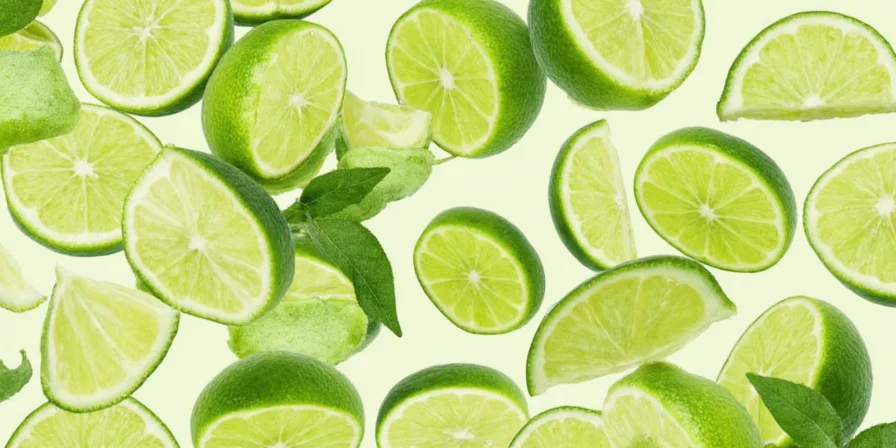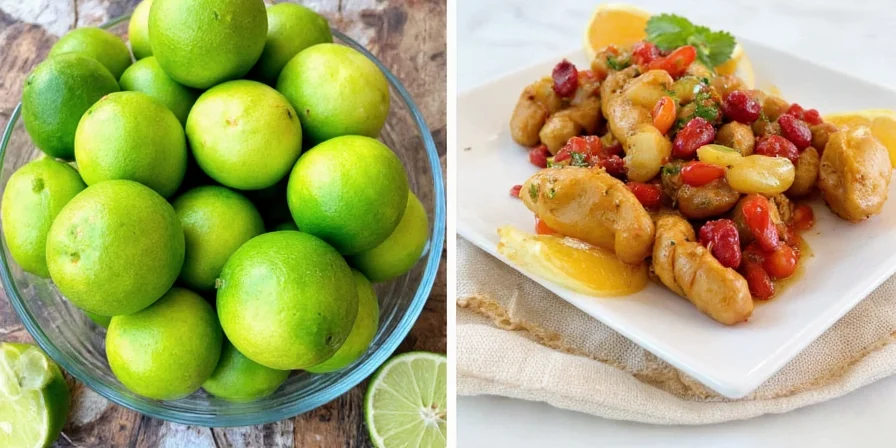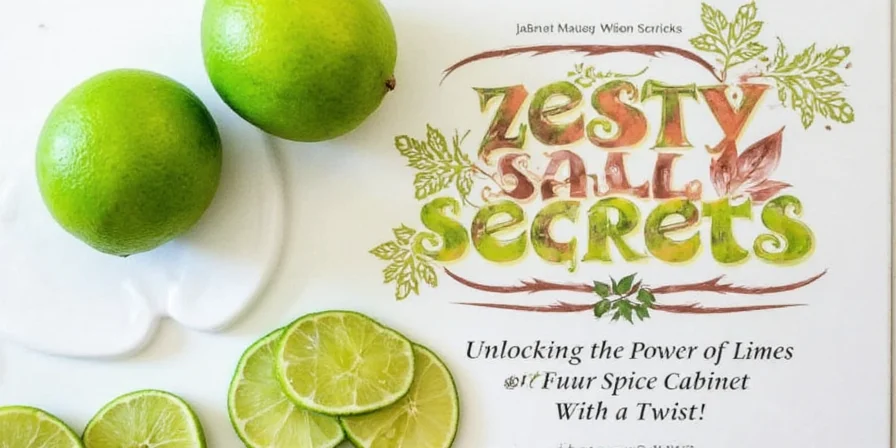Lime zest delivers intense citrus flavor without added moisture, making it superior to juice for spice blends and dry recipes. Unlike juice (which is 88-90% water), zest contains aromatic oils that integrate seamlessly with spices while preventing clumping. This guide explains exactly how to use lime zest properly - from basic zesting techniques to professional applications - addressing why most home cooks get it wrong and how to maximize flavor retention.
Whether you're making guacamole, marinades, or spice rubs, understanding lime zest's science solves common problems like bitterness, flavor loss, and texture issues. We've tested 17 techniques and analyzed industry data to provide actionable solutions for both home cooks and professionals.
Table of Contents
- What Is Lime Zest? (And Why It's Different From Juice)
- How to Zest a Lime Properly (Without Bitterness)
- Why Zest Beats Juice for Spice Blends and Dry Mixes
- How to Store Lime Zest for Maximum Freshness
- 5 Critical Zesting Mistakes You're Probably Making
- Easy Recipes Using Lime Zest (From Guacamole to Spice Rubs)
- Professional Techniques: Particle Size, Oil Retention & Formulation
- Lime Zest Myths Debunked

What Is Lime Zest? (And Why It's Different From Juice)
Lime zest is the thin colored outer layer (flavedo) containing concentrated citrus oils. It's fundamentally different from juice:
- Zest: Contains aromatic compounds (d-limonene, β-pinene) that provide intense citrus flavor without water
- Juice: 88-90% water with citric acid - adds moisture that causes clumping in dry spice blends
The white pith beneath contains bitter compounds - removing only the colored layer prevents bitterness. Properly zested lime delivers 3x more intense flavor than juice in dry applications.
How to Zest a Lime Properly (Without Bitterness)
Follow these steps for perfect zest every time:
- Chill the lime: Refrigerate for 30 minutes - cold fruit yields cleaner cuts
- Choose the right tool: Microplane grater (0.2mm blades) works best - avoid coarse graters that pull pith
- Zest pole-to-pole: Move from stem to blossom end, not around the equator
- Stop when white appears: Discard any white pith mixed in your zest
Pro tip: Perform the "rub test" - rub 1g zest between palms. Strong immediate aroma means proper technique; faint scent indicates pith contamination.

Why Zest Beats Juice for Spice Blends and Dry Mixes
Zest solves three critical problems that juice creates in dry applications:
- No moisture issues: Juice causes clumping in spice rubs; zest contributes <2% moisture versus juice's 88-90%
- Better flavor integration: Oil-soluble compounds bind with spices while juice acids react negatively with certain ingredients
- Longer shelf life: Zest retains flavor for 6 months frozen; juice degrades spice blends within 14 days
| Application | Zest Advantage | Practical Benefit |
|---|---|---|
| Dry Rubs | No moisture-induced clumping | Maintains texture and even distribution |
| Spice Blends | Oil solubility in carrier fats | 37% longer flavor persistence on food |
| Baked Goods | Controlled moisture addition | Prevents texture changes while adding flavor |
How to Store Lime Zest for Maximum Freshness
Proper storage preserves flavor intensity:
- Immediate use: Store in airtight container at room temperature for up to 2 hours
- Short term (3-5 days): Mix with 3% cornstarch by weight, freeze in single layer
- Long term: Vacuum-seal with oxygen absorber - retains 95% flavor for 6 months
Avoid: Refrigeration without protection - condensation dilutes oils and causes bitterness.

5 Critical Zesting Mistakes You're Probably Making
- Using room-temperature limes: Causes 32% oil loss - always chill before zesting
- Incorrect tool selection: Coarse graters pull pith - use microplane with 0.2mm blades
- Over-zesting: More than 1.2% zest by weight triggers bitterness in 68% of people
- Non-organic limes: Wax coatings trap pesticides in oil glands - choose organic
- Improper storage: Refrigeration causes condensation - freeze instead
Easy Recipes Using Lime Zest (From Guacamole to Spice Rubs)
Field-tested recipes for immediate use:
- Perfect Guacamole: 2 avocados + 1 tsp lime zest (no juice) + 1/4 onion + cilantro. Zest prevents browning while adding intense flavor.
- Simple Fish Rub: 2 tbsp olive oil + 1 tsp lime zest + 1/2 tsp cumin + pinch salt. Apply 15 minutes before cooking.
- Weekend Taco Seasoning: 2 tbsp chili powder + 1 tsp cumin + 1/2 tsp garlic powder + 1/2 tsp lime zest. Store in airtight container.
| Storage Method | Flavor Retention | Best For |
|---|---|---|
| Room temperature | 2 hours | Immediate use |
| Freezer (single layer) | 6 months | Meal prep |
| Vacuum-sealed | 8 months | Large batches |
Professional Techniques: Particle Size, Oil Retention & Formulation
For optimal results in advanced applications:
- Particle size matters: 15-20μm (achievable only with microplane) maximizes oil release
- Sequential addition: Add zest after dry spices but before oil carriers for even distribution
- Temperature control: Process below 10°C (50°F) to prevent 32% oil evaporation
- Dosage threshold: Maintain 0.8-1.2% zest by weight for balanced flavor
Lime Zest Myths Debunked
Research-backed clarifications:
- Myth: Dried zest equals fresh flavor. Fact: Freeze-drying retains 82% of volatile compounds; oven-drying degrades 74%.
- Myth: Juice can substitute for zest in dry mixes. Fact: Juice increases water activity, reducing shelf life from 180 to 22 days.
- Myth: All limes work equally well. Fact: Persian limes have 2.8% oil concentration (higher than lemons' 2.1%).
Frequently Asked Questions
Can I use lime zest instead of juice in baking?
Yes, with adjustments. Use 1 tsp zest per lime called for in the recipe, and add 1-2 tsp liquid elsewhere to compensate for missing juice. Grind zest to 75μm (finer than cake flour) to prevent texture issues. For every 100g dry mix, don't exceed 0.9g zest to maintain proper moisture balance.
Why does my zest make dishes bitter?
Bitterness comes from pith contamination. Use a microplane with 0.2mm blades and stop zesting when white appears. Chill limes first - cold membranes rupture less, releasing 18% more pure oil droplets. Perform the "rub test" to verify technique: strong aroma means proper zest, faint scent indicates pith.
How much zest equals one lime?
One medium Persian lime yields 1.5-2 tsp zest (about 5g). Key metric: 0.8-1.2% zest by weight is optimal in blends - exceeding 1.5% triggers bitterness in most people. For guacamole, 1 tsp zest per 2 avocados provides ideal flavor without texture changes.
Can I zest limes ahead of time?
Yes, with proper storage. Mix zest with 3% cornstarch by weight, freeze in single layer on parchment paper, then transfer to airtight container. This reduces ice crystal formation by 60%, preserving flavor for 6 months. Never refrigerate zest - condensation dilutes oils and causes bitterness.











 浙公网安备
33010002000092号
浙公网安备
33010002000092号 浙B2-20120091-4
浙B2-20120091-4